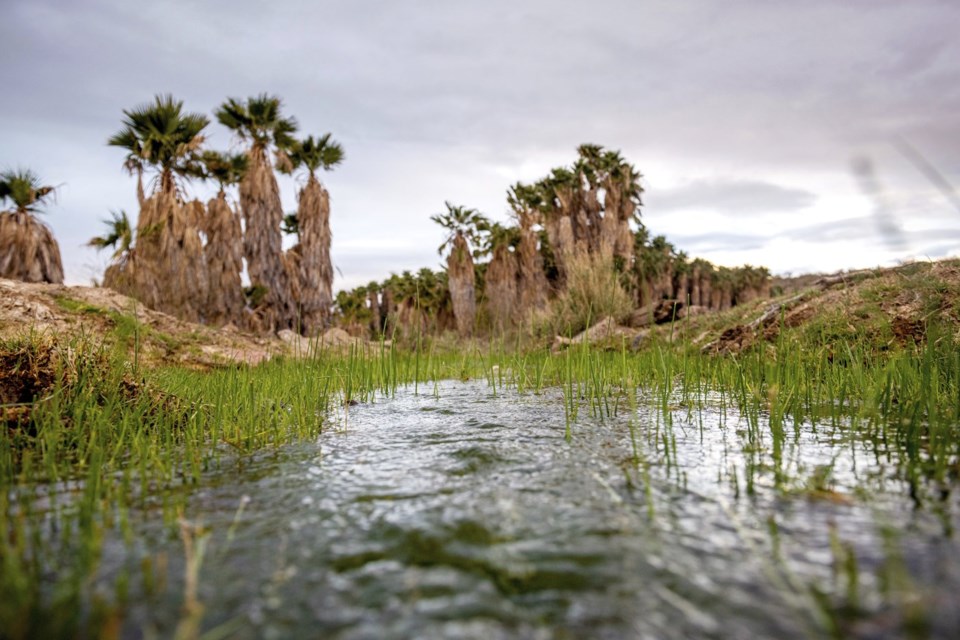PHOENIX (AP) — Members of an Arizona tribe are trying to persuade a federal judge to extend a temporary ban on exploratory drilling for a lithium project near lands they have used for religious and cultural ceremonies for centuries.
Leaders of the Hualapai Tribe and others are scheduled to testify Tuesday in U.S. District Court before the judge who issued a temporary restraining order last month for work at a site halfway between Phoenix and Las Vegas. Demonstrators are expected to gather outside the courthouse before the hearing.
The case is among the latest legal fights pitting Native American tribes and environmentalists against President Joe Biden’s administration as encroach on lands that are culturally significant.
The tribe wants the judge to issue a preliminary injunction extending the prohibition on activity pending a trial on allegations that the federal Bureau of Land Management failed to adequately analyze potential impacts to sacred springs that the Hualapai people call Ha’Kamwe,′ which means warm spring.
The springs have served as a place of healing and prayer for generations, the tribe has said in court filings.
Lawyers for Arizona Lithium Ltd. have argued that the tribe’s claims are speculative and that both the federal government and the mining company have presented evidence that lithium exploration is “a significant public interest as the nation strives to address climate change.”
Arizona Lithium has plans for 131 drilling sites across nearly a square mile (2.6 square kilometers) to obtain samples. The work will help them determine if there’s enough ore to construct a mine and extract the critical mineral needed to manufacture batteries for electric vehicles, among other things.
The largest U.S. lithium mine currently under construction survived legal challenges in neighboring Nevada near the Oregon border last year. Conservationists and tribes argued the would destroy sacred lands where more than two dozen Native Americans were slaughtered by U.S. troops in 1865.
Federal land managers also are expected to issue a draft environmental review of a lithium mine planned by Australian company Ioneer Ltd. between Reno and Las Vegas. No tribes have gone to court over that project, but the Center for Biological Diversity has threatened to revive legal challenges based on .
In the Hualapai case, the tribe has said noise, dust, vibrations from truck traffic and visual effects from the project as planned will change the distinct and culturally significant setting and may make it unsuitable for cultural and ceremonial uses.
“Ha’Kamwe’ and the Big Sandy area are uniquely valuable features essential to the tribe’s culture. There is no substitute or alternative to Ha’Kamwe’ and the Big Sandy area for the Hualapai people,” lawyers stated in a court document submitted last week.
The tribe and lawyers from the environmental group Earthjustice and Colorado-based Western Mining Action Project also argue that approval of the exploratory drilling violated the National Historic Preservation Act and National Environmental Policy Act.
Government lawyers say the tribe must submit sufficient evidence to establish that it's likely to suffer imminent irreparable harm.
“In contrast, an injunction would delay exploration needed to determine whether the lithium deposits in the project area can and should be mined. This would not be in the public interest,” their filing reads.
Backers of Arizona Lithium's project include the Navajo Transitional Energy Company, which announced its plans in 2022 to join with the Australian company and work as a contractor on the project. NTEC said at the time that it would be an opportunity “to expand its role in furthering the clean energy economy.”
In its own filing, the Hualapai Tribe argued that the assertion by federal land managers that an injunction would delay domestic lithium exploration as the U.S. strives to transition to renewable energy sources holds little weight because any renewable energy related benefits from the project are speculative, as mining has not yet been proposed.
The tribe also suggests that the federal government's required consultation with Hualapai was undermined because land managers didn't include the springs within the area that could potentially be affected.
Scott Sonner And Gabriel Sandoval, The Associated Press




